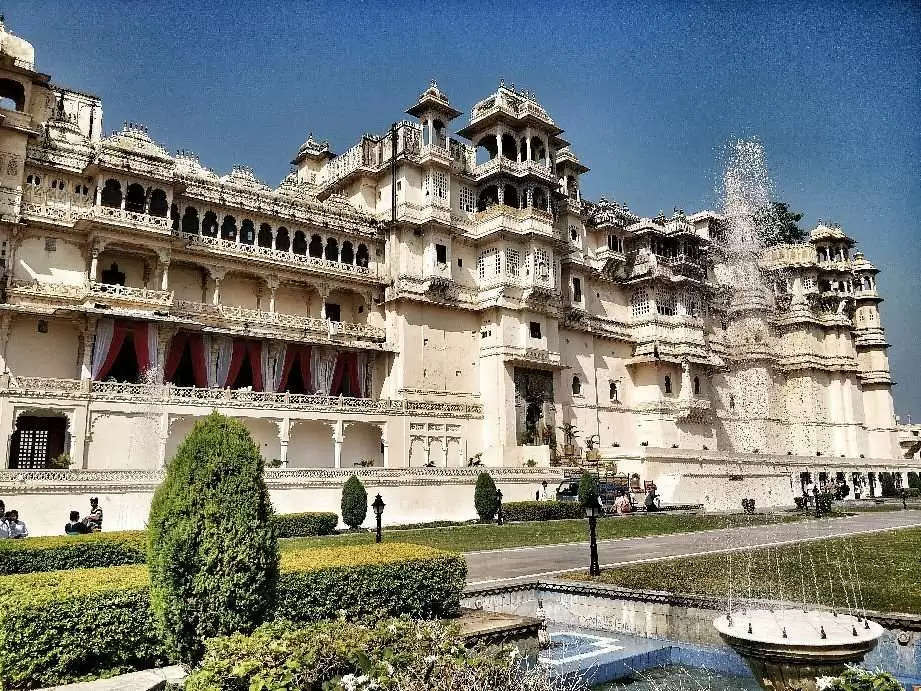That luxurious palace is situated in the city of Udaipur, which is the proof of the bravery history of Mewar, after watching the video, your chest will swell with pride.

Rajasthan News Desk!!! With balconies and towers rising majestically over the lake, it is the largest palace in the kingdom. Dating back to the 16th century, the palace stands as an architectural beauty. Today it is one of the important tourist attractions of Udaipur. The main beauty of this palace is the panoramic view of the lake and surrounding towns from the top of the palace The City Palace is famous for being built by several generations one after the other. The external beauty of the palace and the strategic reason of every element makes the palace a more amazing defense structure.
History of City Palace
This palace was constructed at the time of the establishment of Udaipur city. Over the next 400 years, the palace remained the main site of administration, being built and rebuilt by several kings. The area of the palace belonged to the Mewar Kingdom during 568 AD. During the 16th century, this state was inherited by Maharana Udai Singh. when their capital chittor was at war, he decided to build a new capital close to Lake Pichola. This place was selected on the advice of a monk whom the king met during one of his hunting trips. The first structure to be built was the royal courtyard.
During construction, Udai Singh II died and his son took over the construction work. However, the palace came under the control of Akbar in the Haldighati battle. Later, it went back to the Rajputs and continued to be constructed until it went back into the hands of the British in the 19th century. Even under British rule, the Rajputs built many structures inside the complex. After independence, the palace complex came under the control of the Government of India.
Architecture of City Palace
Built on a hilltop, this palace is a blend of Mughal and Rajasthani styles of architecture. The entire structure is built on a hill to the east of Lake Pichola. This palace is situated at a height of 598 meters above sea level, from where a panoramic view of the enemies is visible. The palace was built over 22 generations of Rajputs, the complex consists of eleven smaller palaces, which are uniform in architectural style.
The main materials used for construction are marble and granite. The interior area of the palace is filled with frescoes, silver works, marble works, inlay works and other things. All the palaces are connected by squares and corridors. Some of the palaces in this complex Heritage Hotel has been converted into boutiques, craft shops and more.
The courtyards of the palace were built in a crooked manner to make it difficult for the enemy soldiers to advance. The main gate of the palace is the Tripolia Gate, which in the past was the main gate to access the palace.
Structure within the City Palace complex
door
The entrances are called poles. The main entrance to the palace complex is the Badi Pol or Great Gate. This entrance leads to the Tripolia Pole, which opens onto the northern side of the palace. The road connecting this gate to the palace is filled with many craft shops and souvenir shops. Just behind the Badi Pol is a huge wall, which was used for elephant fighting.
Amar Vilas
This is the uppermost court of the City Palace. This garden provides entry to the Badi Mahal. This elevated garden is built in the traditional Mughal style and was considered an Anand Mandap. The garden has many arcades, fountains, terraces and towers. This is the highest point of the palace.
big palace
It is called the great palace or garden palace. This palace is built on a natural rock. This palace has a swimming pool, a hall full of miniature paintings and other things. From the palace you can get a good view of the surrounding buildings.
Bhimvilas
It is a gallery full of miniature paintings, mostly related to the myth of Lord Krishna and his lover Radha.
Chinese Gallery
It is an art house decorated with Chinese and Dutch style decorative tiles.
small gallery
It is said to be the abode of litter paintings. The palace is filled with paintings and drawings from the 19th century and earlier.
Durbar Hall
This 20th century hall was a venue for banquets and meetings. The hall is magnificently decorated with chandeliers, magnificent interior works, paintings and more. This hall was built by Maharana Fateh Singh and was called Minto Hall in the past.
Fateh Prakash Palace
It is now a heritage hotel. The place is decorated with crystal galleries, table fountains, jewel carpets and many other rare objects. It also contains several packages of crystal objects that Raja Sajjan Singh ordered from London and delivered after his death.

